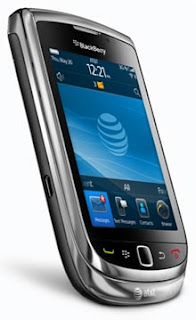Introduction:
In this day and age, you've got to continuously innovate in a broad spectrum of categories to keep pace with the ever evolving nature of the mobile industry. It's clearly a live fast, die hard atmosphere with yesterday's high-end smartphones passing the torch and legacy to newer devices expected to live up to the expectations of the constant changing needs of consumers. Wherever you look right now, there is no denying the vast amount of devices available at the finger tips of consumers, but it truly takes something quite compelling to get them to side with one specifically more than another. RIM built their empire by attacking the business and enterprise end of the mobile market, however, they weren't as successful in attracting everyday consumers. We've seen them go through two touchscreen offerings, with the second one seen as a vast improvement over the first, but regardless of all of its prowess, the BlackBerry Storm2 still could not firmly grasp itself as a heavy contender.
Enter the BlackBerry Torch 9800 which not only holds RIM's legacy on its back, but it's also showcasing a rebooted platform which is optimistic in grabbing the mind share of the everyday consumer – the demographic they've been unable to consistently attract. Sporting a whole new form factor we haven't seen produced ever by RIM, and with competition encroaching on their usual turf from all sides, will the BlackBerry Torch 9800 be able to keep it at bay, while being able to catapult itself as a worthy and viable competitor in this cut throat industry? Let's find out!Design:
In classic RIM fashion, the BlackBerry Torch 9800 doesn't stray too far from the usual medley of solid feeling hardware crafted by them, but it's their very first one to employ a sliding portrait QWERTY form factor – something that's rare in itself across the board. Chrome plates accent a majority of the front and sides which is then combined with a plastic rear cover that employs a patterned soft touch coating. The bottom of the handset is curved, which essentially provides for a natural grip in your hand. Overall, there is a discernible similarity between this one and the Bold 9700 – which is quite evident in its outline. Construction feels quite solid, which is something we usually expect out of RIM's handsets. the BlackBerry Torch manages to feel relatively normal sized without crossing the point of being regarded as bulky. However, you can easily notice its weight (5.68 oz) when you hold it in your hand, which can cause some alarm in the event you drop it. Despite radiating a durable exterior, they is no arguing the kind of damage it will incur from a nasty impact – especially more when it utilizes a sliding mechanism. By no means is the Torch something revolutionary from a design aspect, but it clearly embodies some of the best design elements in use with previous devices and combines them. Moreover, traditional BlackBerry users will find it fitting, but when you compare it to some of the fantastic looking industrial designed handsets out there, it doesn't come off as something exciting to drool over.
Unlike the the SurePress touchscreen found on their last touchscreen model, the Storm2, the Torch 9800 opts to stick with a tried and true stationary touchscreen – minus the gimmicks. Measuring up with a 3.2” HVGA+ (360 x 480 pixels) display, it really didn't radiate something too impressive versus the WVGA and up resolutions employed on some competing smartphones. With slightly less real estate than the Storm2 and retaining the same resolution, detail remains unchanged – granted though, text can be on the smaller and sometimes fuzzier side. We didn't have too much problems trying to view the device outdoors in direct sunlight since it had spot on viewing angles. Instinctively, your first inclination when using the touchscreen is to push down into it just like the Storm2, however, we quickly found ourselves adjusting and enjoyed its accuracy.
At a first glance, one can mistake the buttons below the touchscreen to be touch sensitive ones since they're all flush, but In reality, they're all physical buttons that have a responsive feel to them. Placed fittingly in the middle, you'll find the usual optical trackpad that RIM has decided to stick with – something that actually works pretty well and can come in handy with this model. The left edge is completely barren except for the microUSB port, while the right side houses the 3.5mm headset jack, rubberized volume rocker, and two-level shutter button. To the top, both the lock and mute keys are inconspicuously integrated into the surface with a small cutout in the middle for the speakerphone. In the rear, you'll find the upgraded 5-megapixel camera with flash with the Torch name inscribed into the surface. Removing the flimsy plastic rear cover, it'll provide you access to the SIM card slot, 1300 mAh battery, and microSD card slot.





